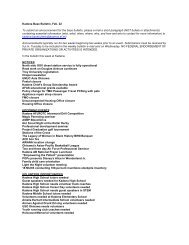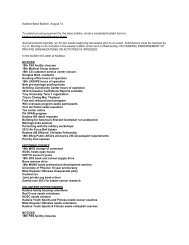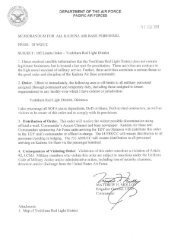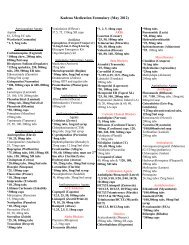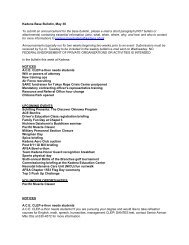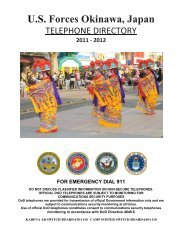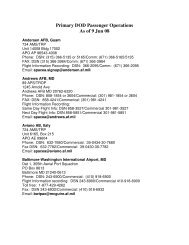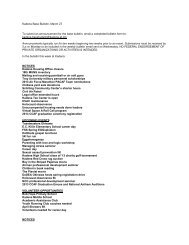JP 3-52, Joint Airspace Control - Defense Technical Information ...
JP 3-52, Joint Airspace Control - Defense Technical Information ...
JP 3-52, Joint Airspace Control - Defense Technical Information ...
You also want an ePaper? Increase the reach of your titles
YUMPU automatically turns print PDFs into web optimized ePapers that Google loves.
CHAPTER IIIAIRSPACE CONTROL PLANNING CONSIDERATIONS“The first and absolute requirement of strategic air power in this war was controlof the air in order to carry out sustained operations without prohibitive losses.”General Carl A. “Tooey” SpaatzAir Force Chief of Staff, 19471. <strong>Airspace</strong> Considerations by Phasea. Phasing provides an orderly schedule of military operations and indicatespreplanned shifts in priorities and intent. Phasing is a way to view and conduct acomplex joint operation in manageable parts. The main purpose of phasing is to integrateand synchronize related activities, thereby enhancing flexibility and unity of effort duringexecution. Phasing may be used to modify the prioritization of airspace control missionsand priorities for operations. Phasing is a useful tool to communicate the CONOPS andthe shifting priorities between ongoing airspace operations. <strong>Airspace</strong> planners shouldconsider that all operations will not smoothly transition between phases, and dependingon the nature of the conflict, national political objectives, and JFC intent, operations maycease prior to the beginning of phase IV (Stabilize) or phase V (Enable Civil Authority).It is of the utmost importance to remember that the phasing construct is just amodel to start planning efforts. Each and every conflict is different and will notresemble the model at different points in time.For more details on phasing see <strong>JP</strong> 3-0, <strong>Joint</strong> Operations.b. Transferring airspace control authority from civilian to military control, adaptingthe ACS to JFC needs during each phase, and eventually returning it to civil authority arecomplex tasks requiring joint military, diplomatic, and interagency efforts. Since a crisismay occur unexpectedly, airspace control and management activities should be a part ofcontingency and crisis action planning from the beginning. For instance, moving C2 andairspace control equipment is a time-phased force and deployment data consideration.Since much of this equipment may deploy (or redeploy) late in the operation due tointertheater airlift (or other lift) limitations, a dynamic plan from the beginning isrequired to ensure critical airspace control capability.c. During joint operations, the likely mix of military and commercial air trafficactivity during various phases may make airspace control more complex than duringcombat. In addition, the ACA may transfer airspace control to the HN during thesephases which gives the JFC and ACA a less direct voice in the conduct of airspacecontrol for continuing JFC operations. The tasks and responsibilities of ACA may play arole in the support of strategic and operational partnerships as part of theater securitycooperation. Figure III-1 depicts notional airspace control authority and the differingpriorities and intent between civil and military airspace procedures.III-1



